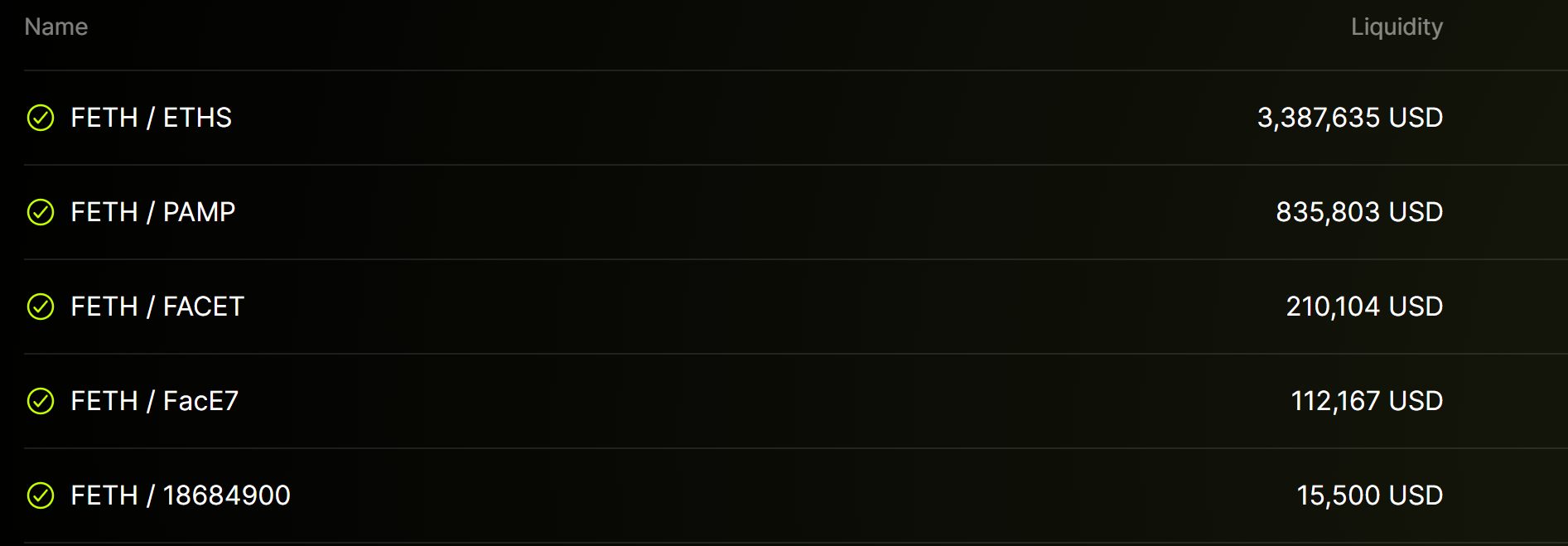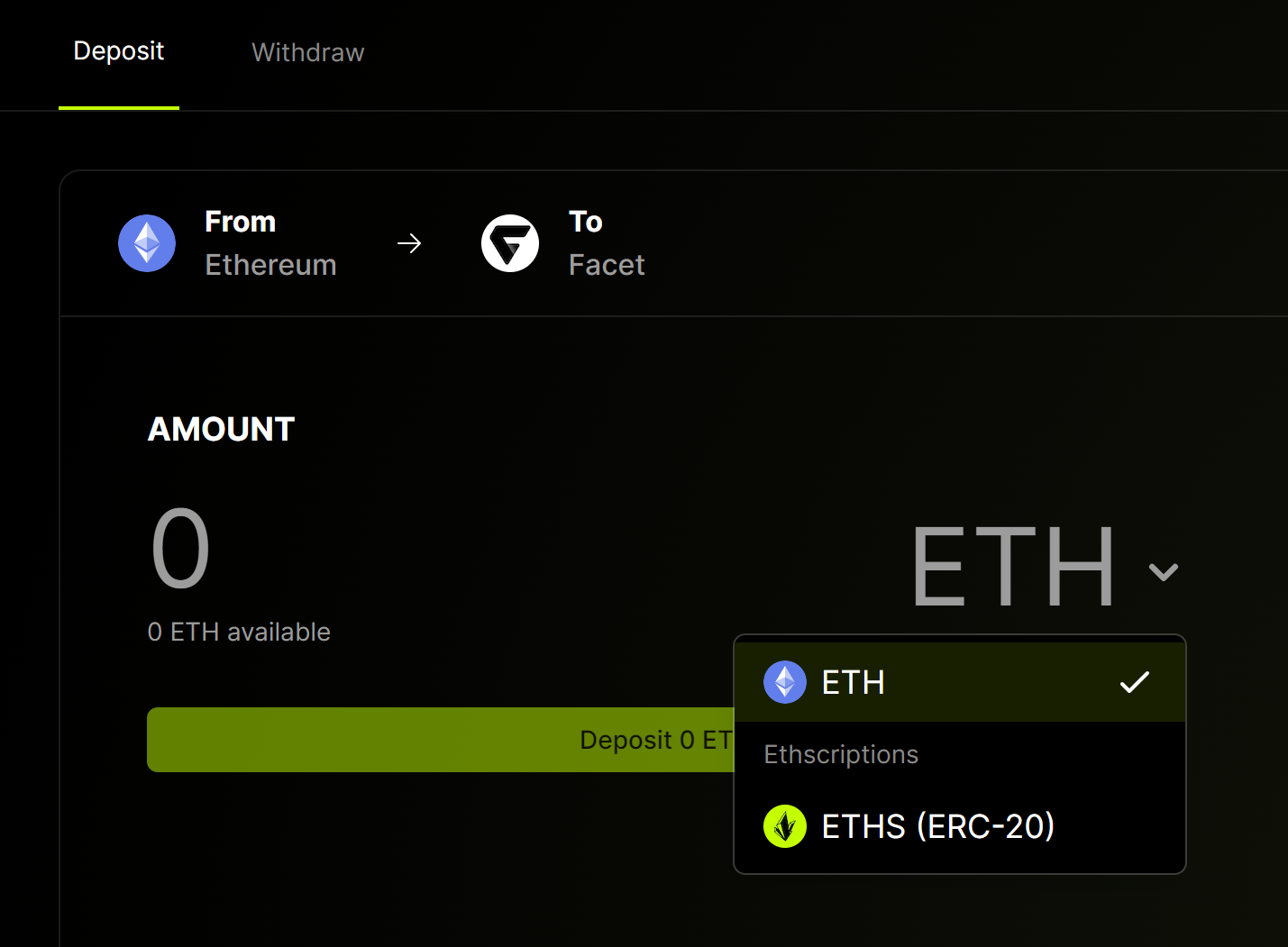Original - Odaily
Author-husband how

A week ago, the ETHS (Ethscriptions Protocol) mainnet Facet-VM was launched, and its three major functions, FacetSwap (transaction), FacetScan (browser) and Dumb Contracts (contract), were activated.
Among them, FacetSwaps performance is amazing. Not only did its gas consumption exceed that of Uniswap on the day it was launched, but its alternative solution of bypassing smart contracts and realizing transactions with low gas also provided new ideas (and controversy) for Ethereum expansion.
When ETHS was born five months ago, the concept of Ether Inscription, which was dubbed Ether Inscription because it also introduced a new method to write data on the chain, did not stir up much excitement.
Now that the mainnet is actually put into operation, Odaily has discovered that its principles and models can not only transform Inscriptions original transaction process, but can even implement the concept of decentralization in multiple fields such as DeFi.
Break away from smart contracts and have great imagination, but there are limitations
Ethereum once stood out from many public chains by virtue of its pioneering nature of smart contracts, and became another spiritual symbol in the encryption market after Bitcoin. A series of applications such as DeFi were born on top of smart contracts, which also brought Crypto to new heights in the last ICO bull market.
However, the running steps of smart contracts determine the users cost on the chain. In addition, the price of Ethereum is getting higher and higher, and users need to pay more costs to interact on the chain.
Since then, L2 has emerged, calculating under the Ethereum main chain, and uploading the result certificates to the main network, helping Ethereum share the computing pressure on the chain, ultimately speeding up transactions and reducing user participation costs.
Facet-VM takes another approach,How to escape from the public chain and rely on smart contracts to conduct on-chain activities。
Facet-VM defines itself as a computing platform that reduces the cost of using Ethereum by changing the interpretation of Ethereum transactions and data without sacrificing its security and decentralized qualities. Its core concept is to bypass the Ethereum smart contract and use CallDate to implement the transaction process.
Brief summary: The overall design logic of Facet-VM is to concretize ETHS, that is, the inscriptions of ETHS can be converted into tokens through FacetSwap, making them easy to trade. However, tokens minted in Facet-VM cannot be converted into inscriptions. Only inscriptions themselves can be converted into each other. Specific technical implementation can be read by readingInscription upstart ETHS launches a virtual machine, this damn sense of reincarnation...understand deeper.
In comparison,Facet-VM is by no means an L2-like network in the traditional sense, more like an Ethereum transaction"plug-in"——Completely dependent on the transaction component of Ethereum’s main network.
Facet-VM accurately predicts the transaction process of smart contracts and then directly outputs the prediction results. This behavior is lower cost than executing smart contract logic.
However, Facet-VM’s approach is not suitable for all situations, and it is not easy to accurately predict the behavior of smart contracts. The behavior of some smart contracts may depend on external data sources or random data, and the prediction results will be biased.
It may become a gathering place for Tugo tokens
The gas consumption of FacetSwap on the day it was launched surpassed Uniswap; according to feedback from the community and social media platforms, the gas cost was reduced by nearly 5-10 times. At the same time, many new tokens have also been born. Currently, judging from the number of tokens that add liquidity to FacetSwap, there are a total of 42 types. Among them, the top five token liquidity are as follows:

If users want to purchase FacetSwap tokens, they need to convert ETH to FETH through its official bridge before they can purchase the corresponding tokens. It is worth emphasizing whether transaction fees are settled in ETH.

Currently, FacetSwap also supports the transfer of ETHS inscriptions to Facet-VM, converting them into ETHS tokens at a ratio of 1:1000; only the mutual conversion of ETHS inscription tokens is supported, and the conversion of other inscriptions may be gradually added in the future. This move greatly reduces the complexity of inscription transactions, and projects can also add liquidity to the corresponding inscription tokens. It sounds like a more decentralized operation.
At present, most of the inscriptions are following the old path of consensus building and have no practical effect. However, the launch of Facet-VM has changed the issuance and trading methods of MEME coins to a certain extent. If simple DeFi functions can be further integrated into it in the future, it may open up a new dog paradise.
By extending its operating principles to other public chains, inscriptions from different ecosystems may no longer rely solely on WeChat group OTC orders or Xianyu to complete exchanges, ensuring security and fairness.
Related Reading



